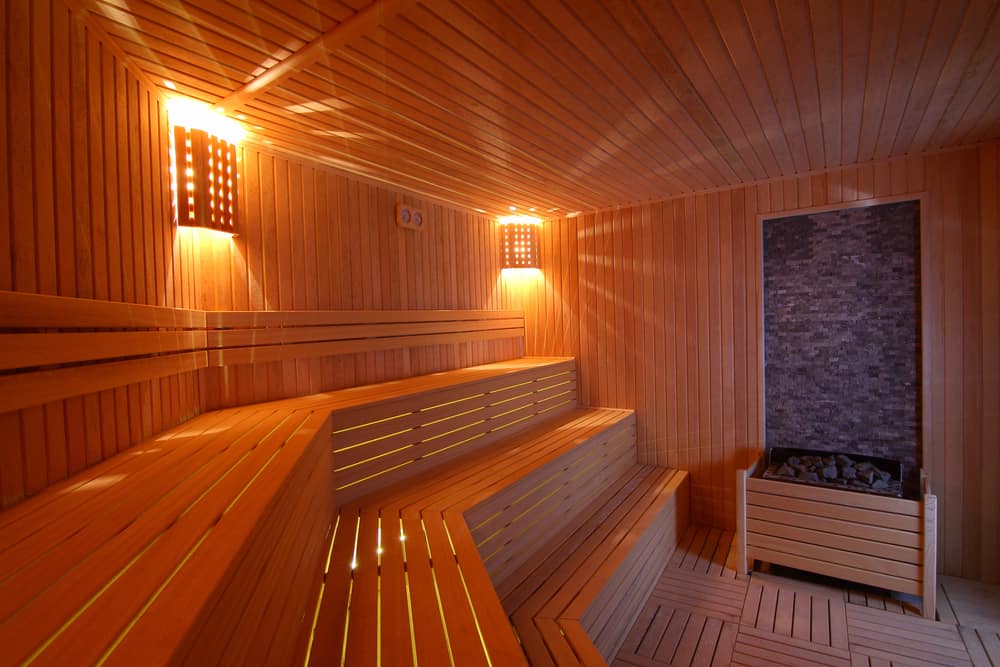
Think back to a romantic dinner by candlelight or of that movie night you had with your friends or family. The one element that both of these experiences have in common is the lighting.
Often, an experience can be enhanced or ruined by the atmosphere in which it occurs. Similar to how you would watch a movie in a low-lit environment, a sauna experience will be much more relaxing if the lighting is proper.
Since lighting is known to set the mood, this article will review the various lighting options available to help you enjoy your sauna experience to its fullest.
Sauna Lighting 101
Unless you are vying for the dark, smoke-filled experience associated with Finland’s traditional savusauna, or smoke sauna, you will most likely want to adopt some form of lighting in your sauna.
At the other extreme, you have the option of implementing color therapy into an infrared sauna. This variant of light therapy has existed in virtually every major civilization that has come before us.
If your sauna space does not have the benefit of a window to let in natural light, you will probably want to include some form of synthetic lighting to accessorize your sauna.
Whatever the case, you can install lighting in practically any location within the sauna you desire. Lighting also comes in different sizes and shapes, giving you plenty of design flexibility and variation.
Whether you decide to follow a pattern or set your lighting at random, you can place lights in a manner that surrounds you from every wall, overhead, and even underfoot.
The only exception to the rule is placing a light above the stove or heater you use. If you do, damage to your sauna and surrounding area is inevitable.
Sauna Light Types
Regardless of your particular preference, you will want to invest in quality lighting, so you are not squinting due to poor light. This section will uncover three types of lighting along with the best suitability for various types of sauna.
1. Fiber Optic
Fiber optic lighting is a popular option with a variety of applications for both residential and commercial purposes. Fiber optic cables can be fed through the ceiling, walls, and flooring of your sauna space, thus making them a safe and aesthetically clean solution.
The primary light source for fiber optics is an illuminator, consisting of a bright light source such as “quartz-halogen or xenon halide.” The fibers used to transmit the light can be either glass or plastic.
Plastic fibers are typically larger in diameter and are usually preferred because they are inexpensive and easier to install. However, the drawback to plastic fiber is that it cannot withstand as hot a temperature, which is a definite consideration if you want to install optics in your sauna space.
Glass fibers tend to have less light loss and maintain higher levels of light input from their source. In both cases, light is transmitted through the fiber but can also glow along with the fiber itself.
You can find efficient fiber optic solutions, such as Harvia’s Luminous Fiber-Optic Sauna Lights, to add a beautiful starry sky effect or various other designs to your sauna space.
2. LED
LEDs can be an optimal solution for some saunas. Although I would not recommend them for traditional steam saunas, they make a good solution for infrared saunas.
LED lighting is not anything new, so they are typically low in cost and relatively easy to install. In addition, you can usually find LED options at local lighting centers or building solution stores.
When working with LED lights, you should understand that their bulbs begin to experience lifespan shortage when presented with temperatures over the typical infrared sauna range.
Since traditional steam saunas operate best at temperatures between 150 and 212 degrees Fahrenheit, LED lighting would be an inefficient solution. You would bear higher than necessary maintenance costs due to more frequent replacement needs.
Generally, LED light bulbs are suited for operation in cooler temperatures. This lighting option would be a good match for an infrared sauna because the temperature range is significantly lower between 110 and 140 degrees Fahrenheit.
You may install LED lighting to shed light up to two meters from the ceiling, wall, benches, or floor throughout your sauna.
